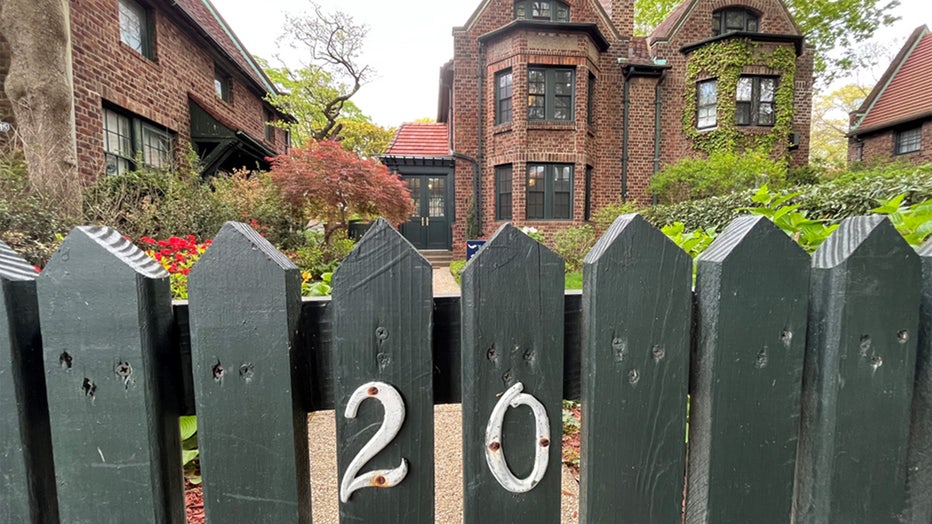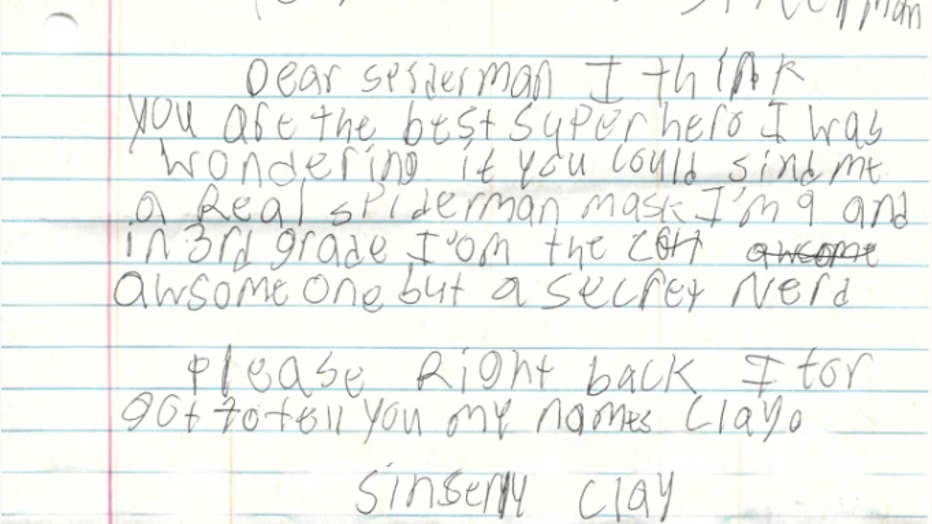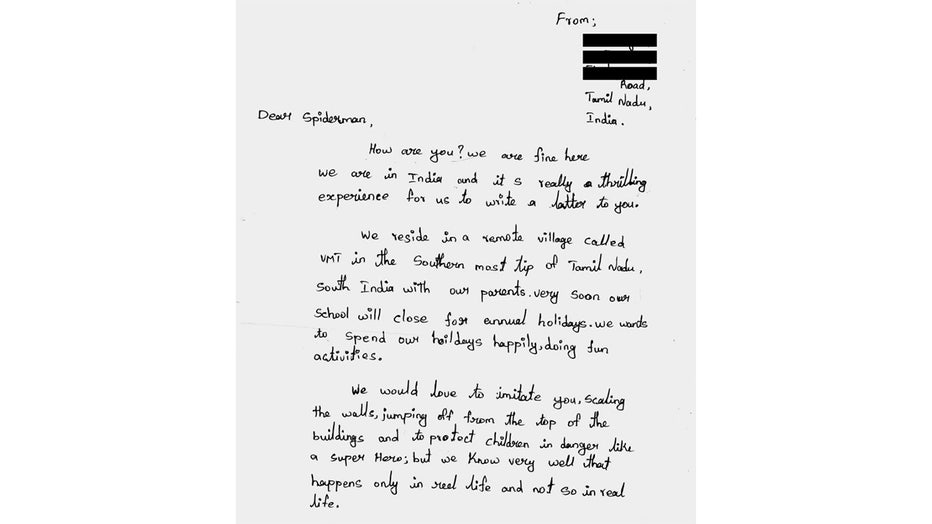Art imitates life on Queens block that’s home to the 'real' Spider-Man

Letters to Spider-Man reveal strange coincidences surrounding Queens home
A family living in Queens thought it was a prank that they were receiving fan mail addressed to Spider-Man. It turns out that the family actually lived in the Parker house and the crazy part is their last name is Parker. FOX 5 NY's Chris Welch takes us to the museum where the letters are displayed today.
FOREST HILLS, N.Y. - The letters began showing up nearly 25 years ago.
They came from all over the world, most written by kids, some by adults acting as ghostwriters.
And they were addressed to Spider-Man, New York City’s fictional web-slinging superhero who, by day, went by Peter Parker.
Comic book clues and a house in Queens
Die-hard fans of Spider-Man got their first hint of the "real" home address of Peter and his Aunt May in issue 316 of The Amazing Spider-Man, released in June 1989.
In it, a change of address form is partially visible.
Readers could see the last digit of the address—a zero—and "Ingram Street."
Also, visible is part of the neighborhood "Forest Hills." (Only the E-S-T in the word "forest" was shown.)
The next issue was another partial address—this time, "20 Ingram" could be seen. Eagle-eyed readers now had Spider-Man’s "real" address.

20 Ingram Street in Forest Hills, Queens.
It turns out, it is a real address, on a tree-lined street in the very real neighborhood of Forest Hills, Queens. It also happens to be for sale.
"That would be Spider-Man’s room," says realtor Gigi Malek, standing on the front line and pointing at the room with the bay window on the top floor of the Edwardian-style, century-old double-brick home.
A cosmic comic coincidence?
This is the part that’s almost too hard to believe. Strange as it may seem, in real life, a Parker truly did live in that third-floor room—it just wasn’t Peter.
The Parkers called 20 Ingram Street home for more than three decades.
"We had no idea about the coincidence until quite late," Pamela Parker said through a chuckle during a Zoom conversation.
"I probably would have been around 10 years old when the first letters started coming."
At first, she and her family thought it was all just a random prank.
But if you thought this couldn’t get any more peculiar, hold on to your Spidey mask: Spider-Man’s arch nemesis is the Green Goblin—a character who, when in human form, used the last name Osborn.
Terri Osborne (different spelling) lived across the street.
"I think it was art imitating life, maybe?" the non-villainous Osborne said with laughter.
The real-life Parkers and Osbornes just kind of laugh the whole thing off. But for the fans, having Spider-Man’s home address gave them an outlet to say ‘thank you.’
"It clearly sparks something for people and helps them connect with… this more accessible superhero," Pamela said.
"(A superhero) that you can kind of write to, invite over and, you know, maybe strike up a relationship with."
"Thank you, Spider-Man"
The real-life parkers got hundreds of letters from all over the world.
"Some of the letters have a wonderful quality of just real innocence there," Pamela said, "Children just looking to connect with their hero."
They saved the truly special ones.
"There were some really delightful messages and really naive ones that children had clearly hand-drawn."
One of them, written by a 9-year-old from Mississippi named Clay Langston, who described himself as "a secret nerd."
"Dear Spider-Man, I think you are the best superhero," his letter began—written with penmanship that you might expect from an elementary school student. "Please right (sic) back."

Clay's letter to Spider-Man (Credit: City Reliquary)
Langston, still in Mississippi, is now in college.
"I lived with my grandparents when I was younger, and then [Peter Parker] lived with his aunt and uncle," Langston told Fox5 via Zoom. "So it really just gave me somebody to look up to."
Spider-Man was always his favorite hero because of "his ability to get up whenever he’s down."
Langston’s letter now lives inside a little-known, bodega-sized museum in Williamsburg, Brooklyn called The City Reliquary, a place dedicated to the "oddball histories" of New York.
"When we first heard this story," said museum founder Dave Herman, "we were kind of blown away by how perfect this was."
More than dozens of letters—mixed in with a few drawings and even junk mail addressed to "Peter Parker"—are now on display.
"One came from a child in southern India, who wrote he loves "to imitate you.. to protect children in danger."

Letter to Spider-Man asking him to come protect the children endanger in Southern India (Credit: City Reliquary)
Another was a letter from a little boy asking for a costume, which was accompanied by a letter from his father who explains that his son wants to grow up to be a hero."
The father adds that they spent "a couple of hours" searching for the correct mailing address.
"We hope that this is the correct address or that you will be able to forward this to the correct address," the father writes. "Thank you, Spider-Man, for being such a great hero."
But as to the mystery—the Parkers at 20 Ingram and the Osbornes at 19 Ingram—Herman said, "If that’s a coincidence, that is the biggest coincidence I've ever heard of in my life."
Spider-Man’s creators have never said.
We reached out to Marvel Comics to ask whether this truly was a coincidence or if someone, somewhere had planned it all along.
"We are going to pass on this," a press representative said in an email.
"It is a mystery," Pamela Parker said, admitting that she has never been able to figure that out.
Asked if there’s anyone in her family named Peter, Pamela said that, too, "will have to remain a mystery."

